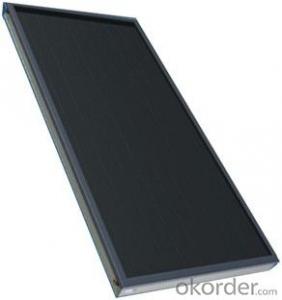Bifacial solar panels are revolutionizing the way we harness the power of the sun. These innovative panels can absorb sunlight from both sides, doubling their energy production potential compared to traditional solar panels. But what does this mean for homeowners? Let’s dive into the world of bifacial solar panels and explore their impact on home energy production.
The Science Behind Bifacial Solar Panels
Before we can understand the impact of bifacial solar panels, we need to understand how they work. Unlike traditional solar panels that only capture sunlight from the front, bifacial solar panels are designed to absorb light from both the front and the back. This is achieved through a special coating on the back of the panel that allows it to capture reflected and scattered light.
Imagine standing in a room with mirrors on all sides. The sunlight that comes in through the window doesn’t just hit one wall; it bounces around the room, illuminating every corner. That’s the principle behind bifacial solar panels. They’re like a room full of mirrors, capturing every bit of sunlight they can.
Increased Energy Production
The most obvious benefit of bifacial solar panels is their increased energy production. With the ability to capture sunlight from both sides, these panels can produce up to 30% more energy than traditional panels. This means that homeowners can generate more electricity, reducing their reliance on the grid and saving on energy bills.
But it’s not just about the increased energy production. Bifacial solar panels also offer a more efficient use of space. Since they can produce more energy per square foot, homeowners can install fewer panels to achieve the same energy output. This is particularly beneficial for those with limited roof space or for aesthetic reasons.
Cost-Effectiveness and ROI
When considering the installation of bifacial solar panels, cost is a significant factor. While the initial cost of bifacial panels may be higher than traditional panels, their increased energy production can lead to a faster return on investment (ROI). Over time, the savings on energy bills can offset the initial cost, making bifacial solar panels a smart investment for homeowners.
Moreover, as technology advances and production scales up, the cost of bifacial solar panels is expected to decrease, making them more accessible to a wider range of consumers. This is good news for those looking to invest in renewable energy and reduce their carbon footprint.
Aesthetics and Design Considerations
For some homeowners, the look of their solar panels is just as important as their functionality. Bifacial solar panels offer a sleek, modern design that can complement the aesthetics of a home. With their ability to capture light from both sides, they can also be installed in a variety of configurations, allowing for greater design flexibility.
However, it’s important to note that the performance of bifacial solar panels can be influenced by factors such as the angle of installation and the surrounding environment. For optimal performance, it’s crucial to work with a professional installer who can assess your specific situation and recommend the best setup.
Environmental Impact
In addition to their financial benefits, bifacial solar panels also have a positive environmental impact. By generating more electricity from the same amount of space, these panels contribute to a reduction in greenhouse gas emissions. This is particularly important as we continue to grapple with the effects of climate change and work towards a more sustainable future.
The Future of Solar Energy
As we look to the future, it’s clear that bifacial solar panels are set to play a significant role in the world of renewable energy. With their increased energy production and potential for cost savings, they offer a compelling alternative to traditional solar panels.
For homeowners, the decision to invest in bifacial solar panels is not just about saving money; it’s about making a statement. It’s about choosing to be part of the solution to our energy and environmental challenges. By embracing this technology, homeowners can contribute to a cleaner, greener future for all.
In conclusion, bifacial solar panels are a game-changer for home energy production. Their ability to capture sunlight from both sides, increased energy production, and potential for cost savings make them an attractive option for homeowners looking to invest in renewable energy. As technology continues to advance and costs decrease, we can expect to see even more widespread adoption of bifacial solar panels in the coming years.

